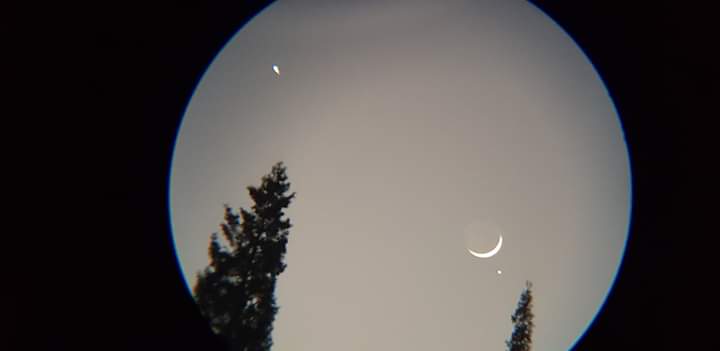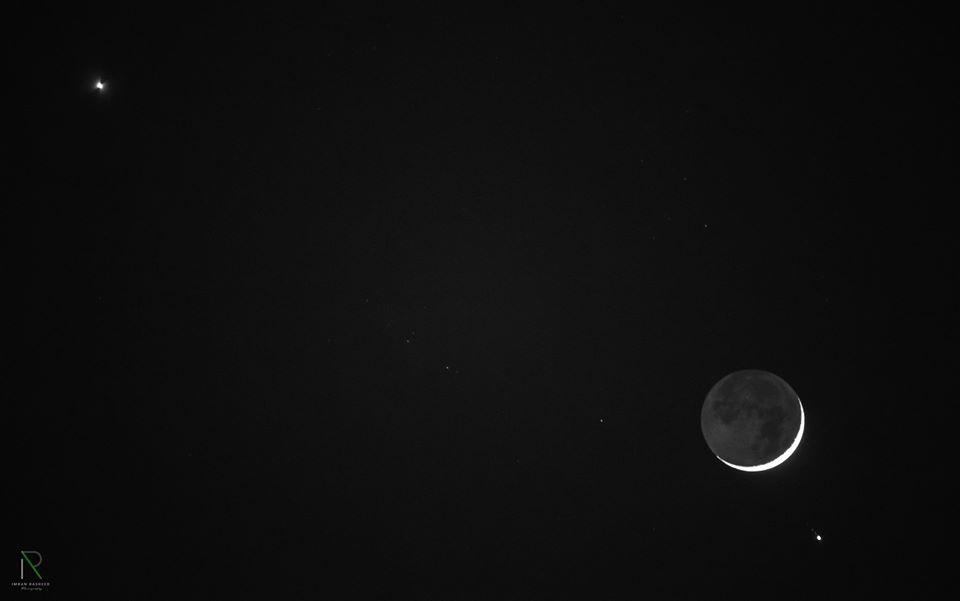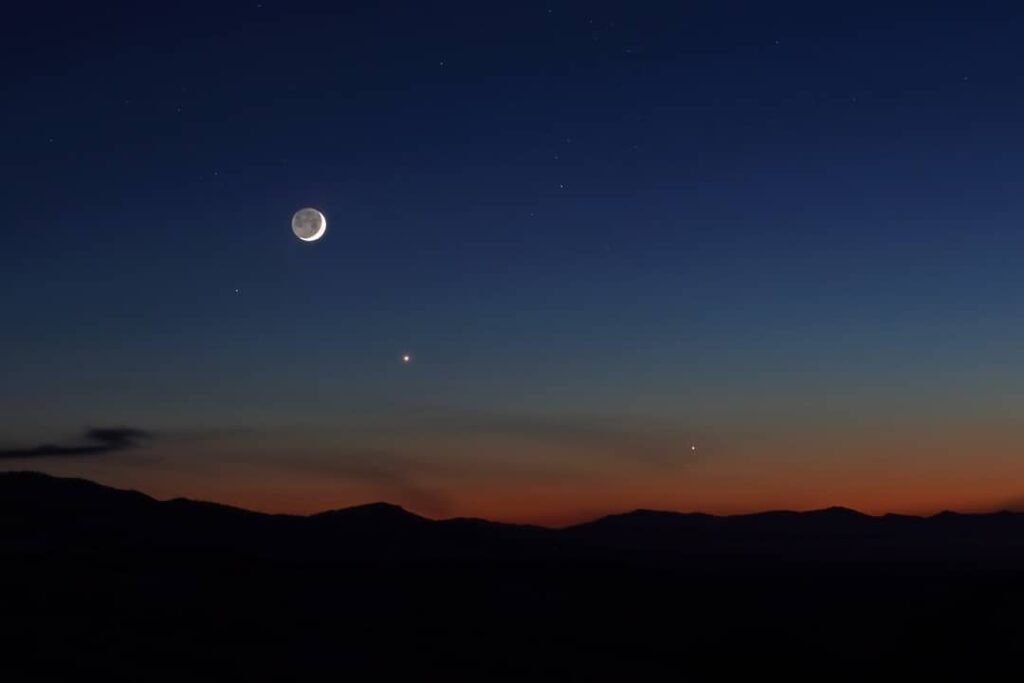Last week, on 28th November, the sky blessed us with beautiful conjunction of Venus and Jupiter with the crescent moon. Did you miss it out because of the cloudy skies or were you so busy as to forget to look at the sky? Don’t worry we have got you covered. Here are some of the stellar planetary parade photos taken by skywatchers and stargazers from around the world!






About Venus
Venus’ surface is volcanic, covered with plains, high volcanic mountains, and immense furrowed plateaus. Venus has no moons and no rings. The planet’s surface temperature is around 465 degrees Celsius (900 degrees Fahrenheit) — sufficiently hot to liquefy lead. Many scientists believe that water once existed on the planet.
More than 40 spacecraft have visited Venus. In the 1990s, the Magellan mission mapped the planet’s surface and Akatsuki is currently in orbit around it. We already know that Venus’ extreme temperature and acidic atmosphere make it an unlikely place for life.
About Jupiter
Jupiter is the largest planet in the solar system. Eleven Earths could fit across Jupiter’s equator. It orbits around 778 million km (484 million miles) from our Sun. It orbits take ten hours to spin on its axis (a Jovian day) yet it takes around 12 Earth years to finish one orbit of the Sun (a Jovian year).
Jupiter is a gas giant. Its atmosphere primarily comprises of hydrogen and helium. It has more than 75 moons. In 1979, the Voyager mission found Jupiter’s ring framework. All of the four giant planets in our close planetary system have ring systems.
Also Read: Hubble captures a peculiar cosmic image


